AN ATLAS OF
ANIMAL ANATOMY
FOR ARTISTS
BY W. ELLENBERGER, H. BAUM AND
H. DITTRICH
Second Revised and Expanded EditionEdited by LEWIS S. BROWN,
Exhibition Department, American Museum of Natural HistoryDOVER PUBLICATIONS, INC., NEW YORK COPYRIGHT 1949, 1956 BY DOVER PUBLICATIONS, INC.
All rights reserved.
An Atlas of Animal Anatomy for Artists, first published in 1949 by Dover Publications, Inc., is a new English translation by Helene Weinbaum of
Handbuch der Anatomie der Tiere fr Kunstler, originally published by Theodore Weicher, Leipzig, in 1901.
The second revised English edition, edited by Lewis S. Brown and first published in 1956 by Dover Publications, Inc., contains a new Preface, 25 additional plates and an enlarged bibliography. International Standard Book NumberISBN-13: 978-0-486-20082-8
ISBN-10: 0-486-20082-5Library of Congress Catalog Card Number: 56-14001 Manufactured in the United States by Courier Corporation
20082535
www.doverpublications.com
Preface to Second Revised American Edition
I have undertaken with a glad heart the preparation of this new edition of the incomparable Ellenberger, Baum, and Dittrich ATLAS OF ANIMAL ANATOMY FOR ARTISTS. When Dover Publications first approached me, they told me they intended to enrich the book by the addition of plates by George Stubbs and others, as well as a bibliography to suggest further study. I appreciate the freedom they have given me in my efforts to carry out those wishes. Our first edition contained all of the plates from the original Ellenberger work, published in 1901 in five volumes.
Only a part of the German text was omitted, most of it more technical than is generally warranted by the needs of artists. The real message is contained in the plates themselves. It is a larger message than may be apparent at first, including, as it does, the directive to compare the different forms as well as to study them separately. The choice of the horse, the dog, the cow, and the lioness was not an accident. Although all are of the class Mammalia, each is a member of a different order. The horse is of the order Perissodactyla (perissosodd, dactylostoe), an animal having an odd number of toes.
It includes the zebra, the tapir, and the rhinoceros as well as the horse. The cow belongs to a larger order, Artiodactyla (artioseven, dactylostoe). Other animals of this order are the pig, the camel, the antelope, the goat, the deer, the giraffe, and the hippopotamus, to mention a few. The lioness and the dog are of the order Carnivora (carnoflesh, vorare, to eat). The first two orders, you will notice, are based on the development of the legs while the third is based on the teeth. 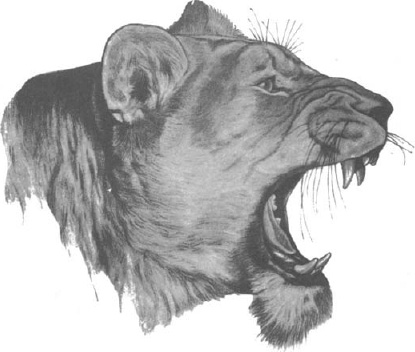 In selecting material to expand this edition, I have kept in mind this comparative aspect.
In selecting material to expand this edition, I have kept in mind this comparative aspect.
The quality of the Ellenberger plates is so fine that it has not been easy to find even a few more, strictly anatomical, studies from which could be made selections worthy to stand beside them. The engravings of the horse by George Stubbs are taken from his ANATOMY OF THE HORSE, published in 1776. George Stubbs has taken his place among Englands great sporting artists. Although these anatomical studies were made under conditions that would be considered almost impossible today, his results speak for themselves. The view and the rear view form an excellent supplement to the Ellenberger plates on the horse. In the original work, numbered and lettered tracings accompany the anatomical plates to designate the names of the bones and muscles.
The functions of the muscles were not understood in Stubbs day as they are now, so that much of the anatomical description does not agree with later (and present-day) descriptions as found in Ellenberger. To include them would probably be more confusing than helpful to the student. The four plates on the anatomy of the cat are selected from the ANATOMIE DESCRIPTIVE ET COMPARATIVE DU CHAT by Hercole Straus - Durckheim, published in 1845. The same objection to the designations of the muscle names exists as in the case of Stubbs. Consequently, no names are given. The Cuvier plates are from ANATOMIE COMPARE by George Cuvier and M.
Laurrillard, published in 1849. This is a giant volume which contains many more plates of equal merit, but the ones selected allow us to extend our study of comparisons to four more orders of mammals. The hare and the flying squirrel are of the order Rodentia (rodereto gnaw) ; the rat kangaroo, of the order Marsupialia (marsupiumpouch) ; the bat, of the order Chiroptera (chirohand, pteronwing). The monkey, like man, belongs to the order Primates (primusfirst). Although the seal, because of its teeth, is classed with the carnivores, it is worth including because it is a mammal that has adapted itself to the sea. 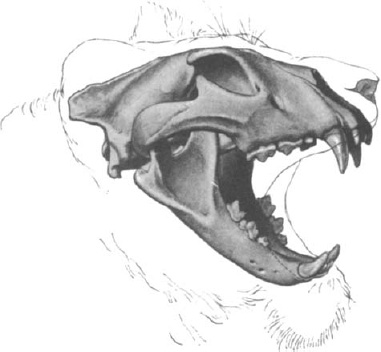 The amazing thing to me about all this is how much alike these animals are.
The amazing thing to me about all this is how much alike these animals are.  The amazing thing to me about all this is how much alike these animals are.
The amazing thing to me about all this is how much alike these animals are.
The parts which they have in common far exceed those which each has alone. All are built around much the same skeletons. It is easy to locate a scapula, an elbow, a wrist on every one although the wrist on a monkey or man, may be called a knee on the horse or the cow. That is merely a confusion of terms, not a difference in structure. If one cared to look carefully enough, he would find that the attachments of the muscles in the different animals are the same. True, the sizes and shapes of the bones and muscles differ, and some of each have been discarded when no longer needed.
The bones and muscles in the feet of horses are simpler and are easier to understand than those of most of the rest. This leads us naturally into the subject of evolution. All the mammals shown in this book, or in any other for that matter, had a common ancestor which we are convinced lived in the closing ages of the huge reptilian dinosaurs. From it have arisen such different forms as the bat, the horse, the whale; a small animal that flies through the air, a large animal that runs across the land, and a huge animal that never leaves the water. Of all the animals included in this book, the rat kangaroo most resembles the common ancestor form. Ernest Thomson Seton in his book, ANIMAL ANATOMY FOR ARTISTS, instructed his readers to consider the dog as the average mammal and to make it a first study from which to branch out into the study of other forms.
This is a sensible suggestion as the dog is not as specialized as, for instance, the horse. However, for a number of reasons, I, myself, did my initial study of animal anatomy on the horse. It is, first of all, one of the simplest animals in structure. It is highly specialized with but a single toe on each foot and a fusion of bones in the legs. It has specialized joints which greatly limit the possible action. Secondly, there is a comparative wealth of easily accessible material on it.
In addition, there are several good comparisons of the horse form to the human form which allow the student readily to use what knowledge of human anatomy he may already possess to understand the quadripedal form. For these reasons, I have included more material in the appendix and in the bibliography on the horse than on any other animal. Lastly, I have inserted a trifle on the sizes of the animals shown. I have added from the original edition those measurements by Ellenberger which pertain to horses of a kind to be found in this country at the present time. All the measurements are given in feet and inches. 

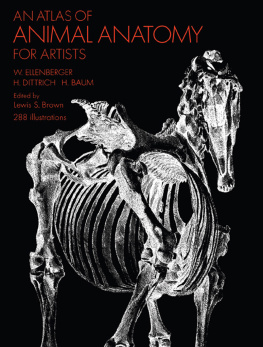

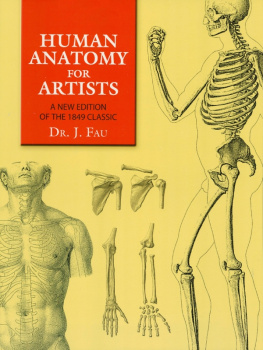
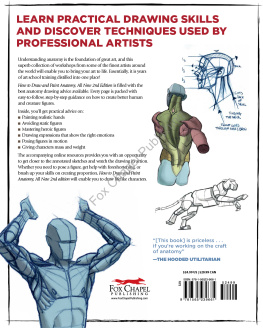
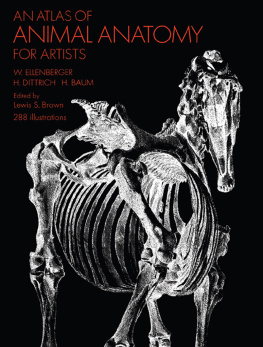
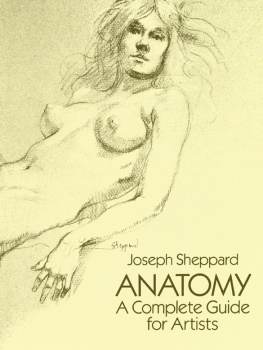
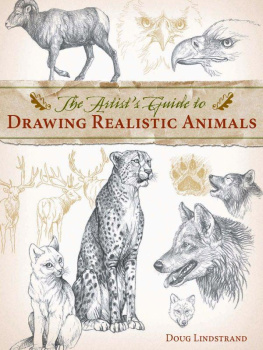

 In selecting material to expand this edition, I have kept in mind this comparative aspect.
In selecting material to expand this edition, I have kept in mind this comparative aspect. The amazing thing to me about all this is how much alike these animals are.
The amazing thing to me about all this is how much alike these animals are. 